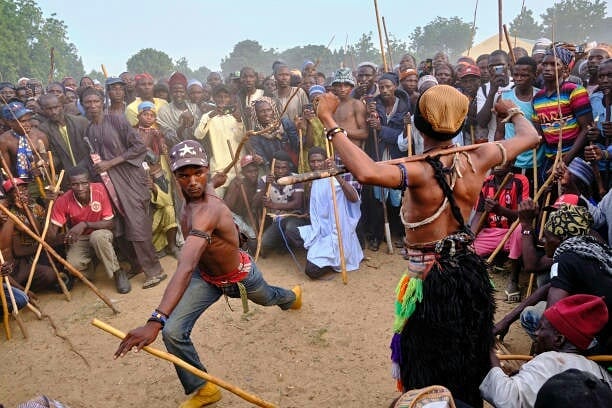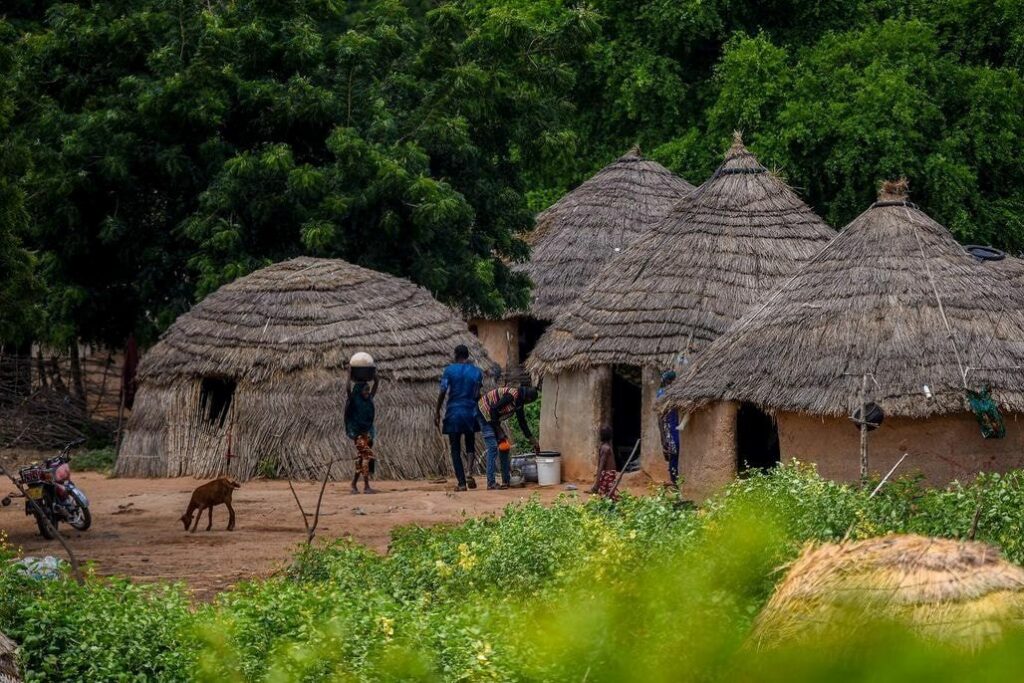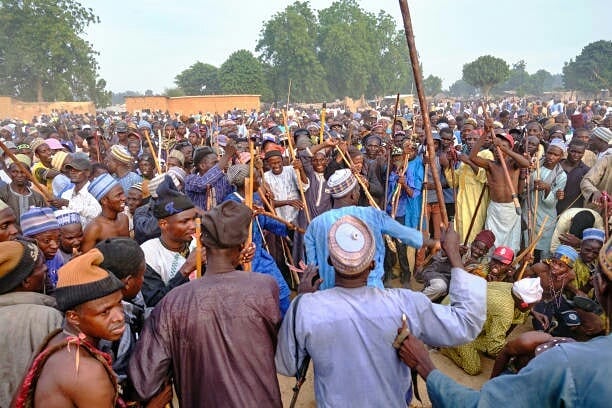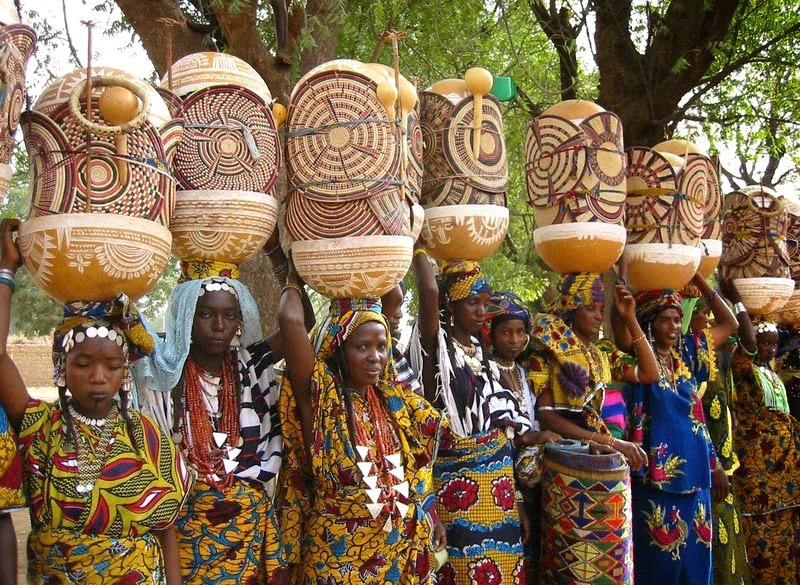Introduction
The Fulani People – Nomadic Heritage and Rich Cultural Identity
In this post, we will know the history, origin and cultures of the Fulanis. The Fulani, also referred to as Fula, Fulɓe, or Peul, are a major ethnic group found throughout West and Central Africa, spanning nearly 20 different countries. They are widely recognized for their nomadic and semi-nomadic way of life, with many engaged in cattle herding and pastoralism. Despite being spread across a vast region, the Fulani are connected by their shared language, Fulfulde (or Pulaar), and a unifying cultural code known as Pulaaku. The majority of Fulani people practice Islam while the smaller number practice Christianity or traditional African religions.
History of the Fulani People
The Fulani trace their history back over a thousand years ago. Historians believe that they originated in the Senegambia region (modern-day Senegal and The Gambia) and began migrating eastward around the 10th century into different parts of Africa.
Also Read: The Sayawa (Zaar) Story During the Pre-Colonial Era
By the 18th and 19th centuries, Fulani leaders led a series of Islamic jihads across West Africa, most notably Usman dan Fodio’s Sokoto Caliphate in present-day northern Nigeria conquered many cities and kingdoms. The Jihad almost swept the entire Northen Nigeria. During the Jihad, where they find it difficult to penetrate due to resistance, they would move ahead to the next kingdom.
The Kingdoms that resisted their penetration were the one mostly surrounded by mountains or hills because the settlers there usually climb the mountains near them and fight back. These jihads helped spread Islam and led to the establishment of Islamic states across the Sahel.
Origin and Migration
The exact origin of the Fulani people is still debated. Some scholars suggest a mixed ancestry of North African Berbers and Sub-Saharan African groups. Others link them to the ancient Egyptians due to their light complexion and fine features. Though no records were kept in the olden days, but they are mostly found in West and Central Africa.
Traditionally, the Fulani are nomadic pastoralists, known for herding cattle and migrating across thousands of kilometers across Africa. Their migration patterns in search of grazing areas helped them establish communities in multiple countries.
Fulani Food and Cuisine
Fulani cuisine is largely influenced by their nomadic lifestyle and cattle herding. Though they mostly drink milk from the cows they rear and they have other foods to nourish their bodies.
Their food consists mainly of:
Dairy Products: Milk, yogurt, and butter are dietary staples.
Pounded Grains: Millet, sorghum, and maize are common, often made into porridge or couscous.
Meat Dishes: Beef, goat, and sometimes camel meat are prepared during festivals and ceremonies.
Stews and Soups: Dishes like miyar kuka (baobab leaf soup), miyar kubewa (Okro soup) and tuwo are popular in settled Fulani communities.
Religion and Spiritual Beliefs
The Fulani people are predominantly Muslims, with Islam playing a central role in their daily lives and cultural identity. And the smaller number practice Christianity or traditional African religions. Religion and modernization has influence their: Dress codes, Legal systems, Education (Qur’anic and Christian schools), Festivals and moral values.
Before the spread of Islam and Christianity, some Fulani practiced indigenous beliefs, but these are now largely diminished because you can hardly find any Fulani practicing African Traditional religion.
Fulani Festivals and Celebrations
Fulani festivals are vibrant and culturally rich. The festival includes:
- Sharo (Shadi): Among the Fulani, the Sharo festival serves as a test of manhood. Young men undergo public flogging, and enduring the pain without flinching is seen as a testament to their bravery and readiness for marriage.

- Gerewol: The Gerewol Festival is a yearly courtship celebration observed by the Wodaabe, a subgroup of the Fulani ethnic group and is a week-long event. This vibrant, week-long event features young men competing to win the admiration of women through traditional dances and striking displays of beauty. Dressed in bright, colorful clothing and adorned with detailed face paint and jewelry, the men perform rhythmic dances that highlight their tall stature, bright white teeth, and expressive eyes—all considered symbols of attractiveness. The festival is a lively showcase of Wodaabe cultural identity and social traditions.
During these festivals, amid the settled people, musicians and praise-singers perform at festivities such as weddings, naming ceremonies, Islamic and Christian holidays.
During the Festivals, Fulani men engage in: Dancing Competitions, Face Painting, Beauty Contests judged by women.
Other Islamic festivals like Eid al-Fitr and Eid al-Adha are celebrated with communal prayers, feasting, and animal sacrifices. And the Christians among them also celebrates Christian festivity such as Easter, Christmas and New Year.
Fulani Culture and Way of Life
The Fulani are known for their discipline, strong sense of honor, and deep respect for traditions. Ranging from greetings, dressing, types of food, marriage and child’s naming.
Main cultural aspects include:
Language: Fulfulde (also called Pulaar or Fula)
Clothing: Men wear flowing robes called boubous, while women adorn themselves with colorful wrappers and jewelry.
Music and Dance: Traditional instruments include drums, flutes, and lutes.
Art: Intricate hairstyles, henna designs, and calabash decorations are common forms of artistic expression.
Their nomadic lifestyle has led to a minimalist approach to material possessions, valuing livestock above all. A typical Fulani person is an easy going and a simple lifestyle.
Traditional Clothing of the Fulani People
Cultural Importance: The traditional clothing of the Fulani represents their deep cultural roots and identity, shared by Fulani communities across many West and Central African nations.
Fabric and Materials: Their garments are typically crafted from cotton or leather, ideal for the hot and dry environments in which many Fulani live.
Men’s Clothing: Fulani men usually wear a long, loose-fitting robe known as a boubou or riga, often accompanied by a pointed hat called a noppire.
Women’s Clothing: Fulani women commonly dress in a lepi, a wrap-around skirt, with a mudukare, a sleeveless crop top. Bright and colorful headscarves complete the outfit.
Jewelry and Beadwork: Fulani women are renowned for their striking accessories, including oversized gold earrings known as kwottenai karfe, as well as elaborate necklaces and bracelets. Beads are frequently used to decorate both clothing and hairstyles.
Henna Designs: Henna is widely used by Fulani women for body decoration, especially during celebrations like weddings. Hands, feet, and legs are adorned with detailed patterns.
Decorative Embroidery: Their attire often features detailed embroidery in bold colors such as red, green, and blue, enhancing its beauty and uniqueness.
Headwear: Distinctive headpieces are worn by both sexes—men sport multicolored hats, while women decorate their hair with beads, cowries, and silver ornaments.
When It’s Worn: Traditional Fulani dress is showcased during festivals, weddings, and major community gatherings, reflecting its cultural value.
Modern Trends: Although traditional wear remains significant, modern versions with updated styles and fabrics are increasingly popular among younger Fulani, blending tradition with contemporary fashion.
Countries Where Fulani Are Found
Due to their nomadic lifestyle which have make them to move from one place to another in search of grazing areas, the Fulani are spread across more than 20 African countries, especially in West and Central Africa. With an estimated over 40 million, major populations exist in these countries: Nigeria (largest Fulani population), Senegal, Gambia, Ghana, Togo, Benin, Guinea, Mali, Niger, Mauritania, Guinea Bissau, Burkina Faso, Gabon, Cameroon, Chad, Sudan, Central African Republic, Democratic Republic of Congo.

Smaller communities are also found in North Africa and parts of East Africa.
Marriage Traditions of the Fulani
The Fulani Traditional Marriage
Fulani traditional marriage typically occurs in either two or three stages, depending on the customs of the specific Fulani group. As followers of Islam, Fulani men may marry up to four wives, and marriages often follow social class distinctions while Christianity preaches one wife.
They commonly practice endogamy, with distant cousins usually preferred for marriage before seeking spouses from outside the family. The three main stages in the marriage process are Sharo (a public flogging ceremony), Koowgal (the dowry payment), and Kabbal (an Islamic marriage rite).
The Sharo—a test of bravery and endurance for the groom—is not universally practiced and is omitted in some communities. The most crucial stage is the Koowgal, which involves the transfer of cattle as dowry. This step formally seals the union and allows the bride to move into her husband’s home. The Kabbal is a religious ceremony conducted without the physical presence of the bride or groom.

For the Fulanis who practice Christianity as concludes their marriage rites in the Church as well for prayer and spiritual blessings from the Priest or Pastor as the case may be. This is done when all the marriage rites have been completed. While modern Muslim weddings after the dowry has been paid and the traditional Islamic ceremony concluded in a mosque or hall they might opt for a reception if they so wish.
Fulani marriages are often arranged by families and follow these steps:
Courtship and Betrothal: Involves the payment of a bride price (kalimah).
Sharo Festival: A public flogging ceremony where young men prove their readiness for marriage by enduring pain.
Nikkah Ceremony: An Islamic wedding conducted by an imam.
Traditional Wedding Celebrations: Include music, dance, and feasting, with women showcasing elaborate hairstyles and henna art.
Polygamy is accepted by the Fulanis who practices Islam though Christianity is not accepted, but marriages are guided by respect and family values.
Fulani Maiden Dance
One of the traditional dances performed by Fulani maidens is known as Tumbudi. In this cultural display, young girls wear traditional cotton garments and balance calabash bowls on their heads as they dance to the rhythms of local musical instruments such as trumpets, the gungun, and kalangu (talking drums).
You Can Also Read: Maasai Tribe History
In some regions, Fulani girls also perform an energetic, rhythmic jumping dance that highlights their vitality and youthful strength. Early marriage is a common practice within Fulani and Hausa societies, with girls sometimes being married as early as the age of fourteen though depending on the regions and laws.
Conclusion
The Fulani people are a symbol of resilience, tradition, and cultural depth. From their rich history to their colorful festivals and deep-rooted Islamic and Christian identity, they continue to influence the social and cultural fabric of Africa.
Whether as nomads, settlers, or spiritual leaders, the Fulani remain a vital part of Africa’s diverse ethnic landscape.
Action
Hope you were entertained by this Fulani history and cultural heritage and has inspires you? You can share and also comment below so as to keep our culture heritage alive! Let built ties through cultures. Also Visit our YouTube Channel: KunzaarChannelsTV through @kunzaarchannelstv to watch the best of cultural heritage.

